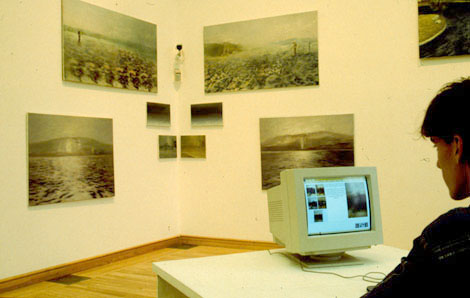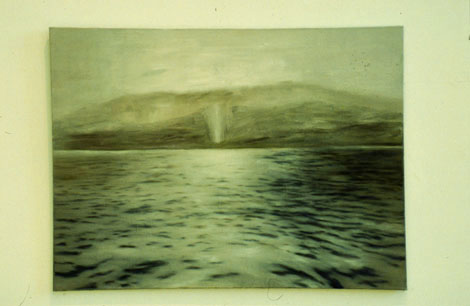
Attila Szûcs
Dichotomy
Painting installation, 1995-96
|
Dichotomy consists of single and duplicated pictures which can be interpreted both individually and as a series. The artist's wish was to create a web of images with the purpose of facilitating the emergence of a kind of hidden "super information," or at least the realisation of the existence of this information. 
The desired effect is that of a stereo-picture which does not so much employ the organ of vision, the eyes, but rather originates in the brain as an inner image by an assumed thinking process, and thus refers to the primarily intuitive character of thinking, as well as of perception, which seems to precede it.
Directions: Look at it for a long time. Even for hours, without exertion. Then, as you stop directing your attention at the concrete image, let the "other" picture surface. With the cessation of the eyes' convergence, the image will first be divided into two, then disappear with the constriction of the peripheral zone. The automatic focus of the eye, by which it selects a part of the whole and treats it as a separate segment, contains a reference to the thinking process, which treats information similarly. The defensive role of this automatism is obvious. 
Questions: Can an image - with a meaning of its own, and with the potential to interpret the other images which have created it and are not apparently related to each other - emerge from the seemingly chaotic "noise" lingering after the mind's random action - its focusing on details - has been eliminated? Can the constriction of the mind into constant and involuntary concentration obstruct the perception of this unknown image assembled of details? And finally: can the image thus discovered create - similarly to the images hidden in stereograms - the feeling of a new, unknown dimension?
Back to Current Coordinates |